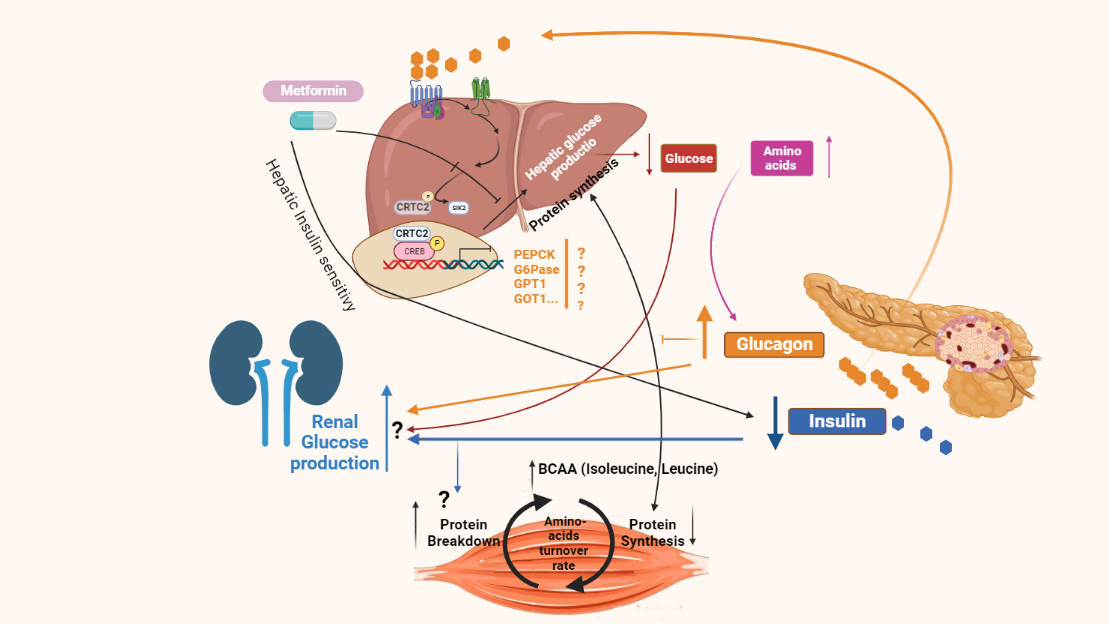Metformin, the treatment of first choice in type 2 diabetes (T2D), is known to mainly act by decreasing endogenous glucose production (EGP) in the liver. Paradoxically, in the last decade several reports documented increased EGP after metformin treatment. This increase, was often attributed to pronounced rises in glucagon, consistent with counter-regulatory response to the glucose lowering effect of metformin. However, considering that hyperglucagonemia, but not hypoinsulinemia, is a main driver of EGP in T2D, increased EGP should have been a common finding. This observation, together with the finding that metformin antagonizes glucagon effects on energy expenditure and protein synthesis, concurrently to its effects on EGP and the emerging evidences demonstrating increased branched chain and gluconeogenic amino acids in response to metformin treatment may points to a liver alpha-cell skeletal muscle cross talk similar to that observed in the liver-alpha cell axis. Here, we provide a mechanistic perspective to this latter possibility, based on mechanistic studies of metformin’s transcriptional targets; retaining thus its glucagon antagonistic and presumably anti-gluconeogenic effects on liver and attributing the increase in EGP to renal gluconeogenesis. We finally discuss how increased EGP might reflect an adverse response to metformin treatment, providing support from clinical and epidemiological data.

